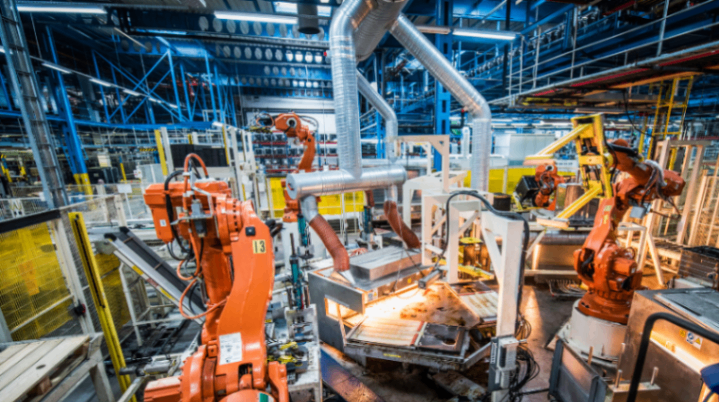Industry slightly down year-on-year in April
Economic commentary by Jakub Seidler, Chief Economist of the CBA

Industrial production fell by 0.4% year-on-year in April, while the analysts' consensus, according to Reuters, expected a year-on-year stagnation (Chart 1). The year-on-year decline eased from March's -2.9%. The figures are adjusted for differences in the number of working days, with 3 more in April and 3 fewer in March this year, so without adjustment the industry fell by 11% year-on-year in March and rose by 9% in April. On a month-on-month basis, manufacturing rose 0.6% after falling 1.6% in March. The main contributor to the year-on-year growth was the production of other transport equipment, while electricity generation was negatively affected by outages and lower consumption due to warmer weather. Car production fell slightly. New orders also fell month-on-month and annual growth slowed by 3.6%, with domestic ones only stagnating. For the full year 2023, the industry declined by 1.2% (after revision); for this year, the economists' consensus expects industrial growth of around 1.5%, however, from January to April, the industry declined by 0.8%.
On a month-on-month basis (seasonally adjusted), the industry grew by 0.6% in April, while in March it fell by a strong 1.6%. However, the month-on-month momentum has been choppy this year, as production jumped back above 2% in February. The biggest contributors to April's growth were machinery and equipment and other transport equipment. The production of cars stagnated (after a decline in March), while the production of chemicals, construction materials or electrical equipment also declined slightly, as did the production of electricity;
In year-on-year terms, the industry declined by 0.4% after 2.9% in March. This is the calendar-adjusted figure. The main contributor to the growth was the production of other transport equipment (+33%), while electricity production was negatively affected by outages and lower consumption due to warmer weather (-10% yoy). Car production fell by 0.9% yoy after -6% in March (Chart 2).
New orders fell slightly month-on-month in April and the year-on-year growth rate slowed from 5.4% to 3.6%. Domestic are rather stagnant. Double-digit growth in new automotive orders also slowed noticeably to 7% in February and March (Chart 3).
Developments in the industry are thus bumping up against the fact that the automotive sector will not be able to support it as significantly this year. While the automotive contribution to growth last year was a strong 2.9 percentage points and without it the industry would have fallen by more than 4%, this year the contribution is only 0.2 pp. The expected weaker development is then also indicated by leading indicators, with industry confidence declining in May - but if we look at the detailed development by sector, it is clear that the positive development in recent months has been mainly driven by the automotive sector, which in turn has a rather negative outlook for manufacturing activity or foreign demand for the coming months (Chart 4). This suggests that an improvement in the industry is not very likely in the coming months. While the latest consensus of economists expects domestic industry to grow by 1.5% this year, this would be a relatively positive development in the light of the latest figures, as it has so far declined by 0.8% from January to April (Chart 5).